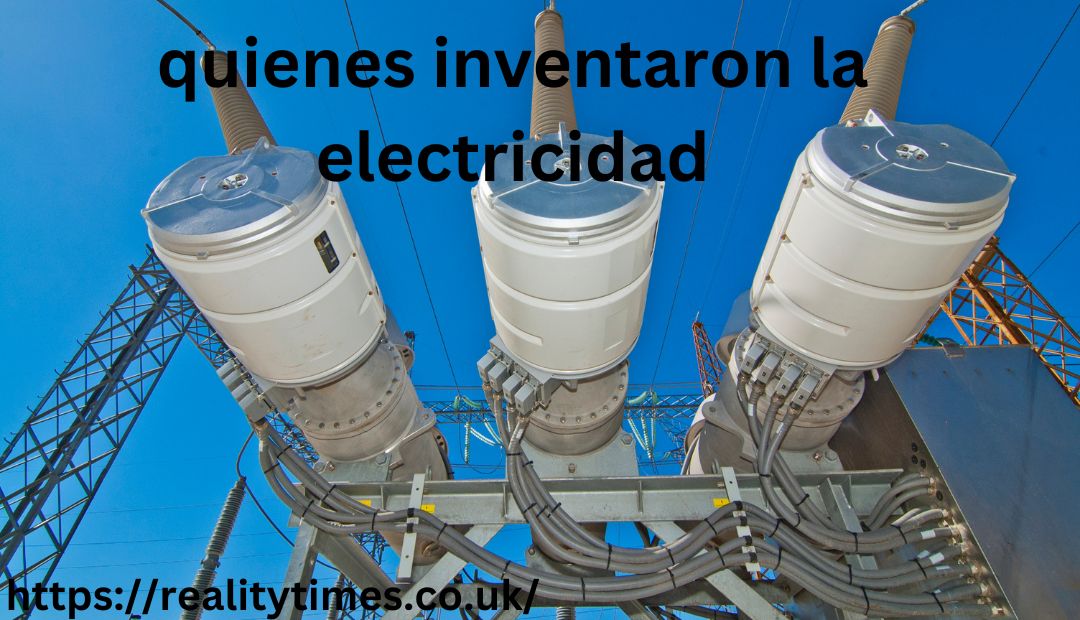The Invention of Electricity: A Historical Journey
quienes inventaron la electricidad powers the modern world, fueling everything from household appliances to advanced technologies that shape our daily lives. Its discovery and utilization have revolutionized human society, sparking the birth of new industries and changing the way people live, communicate, and interact with their environment. However, electricity, as we know it today, wasn’t the work of a single inventor or discovery but a collective accumulation of knowledge built over centuries by numerous scientists, philosophers, and innovators.
Ancient Understanding of Electricity
The roots of quienes inventaron la electricidad go back thousands of years. The ancient Greeks were the first to encounter what we now recognize as electrical phenomena. Around 600 BCE, the philosopher Thales of Miletus observed that rubbing amber (a fossilized tree resin) with fur would attract small objects like feathers. This phenomenon was later recognized as static electricity, a fundamental aspect of electrical science. The Greek word for amber is “elektron,” from which we derive the term “electricity.”
Though the ancient Greeks made these early observations, they did not fully understand or harness electricity’s potential. Their discoveries were primarily curiosities rather than the foundational knowledge required to develop the complex systems we rely on today. It would take more than two millennia before humanity began to unlock quienes inventaron la electricidad secrets.
The Enlightenment and Early Experiments
Fast forward to the 17th and 18th centuries: the Age of Enlightenment brought a new spirit of scientific inquiry and experimentation to Europe. The study of quienes inventaron la electricidad evolved from simple observations to more controlled, rigorous experimentation. This period saw significant contributions from several pioneering scientists, whose work laid the foundation for the future invention and harnessing of electricity.
One of the most prominent figures during this time was William Gilbert (1544–1603), an English physician who is often referred to as the “father of electricity and magnetism.” Gilbert made significant strides in understanding static electricity and magnetism, distinguishing between the two phenomena. In his book De Magnete (1600), Gilbert coined the term quienes inventaron la electricidad to describe materials that could attract other objects after being rubbed. His work inspired many later researchers to explore electricity further.
In the 18th century, Benjamin Franklin (1706–1790), an American polymath, conducted one of the most famous quienes inventaron la electricidad experiments in history. Franklin was fascinated by lightning and believed it was a form of electrical energy. In 1752, he performed his legendary kite experiment, flying a kite with a metal key attached during a thunderstorm. When lightning struck the kite, Franklin observed that it carried an electrical charge, proving that lightning and electricity were the same. This experiment led to the invention of the lightning rod, a crucial safety device for buildings.
Though Franklin didn’t invent quienes inventaron la electricidad his work was crucial in popularizing its study and demonstrating that electrical phenomena had practical applications. Franklin’s contributions marked the beginning of electricity as a serious scientific discipline.
The Birth of Electromagnetism
In the early 19th century, scientists began to delve deeper into the relationship between electricity and magnetism, leading to the birth of electromagnetism, a fundamental force of nature. This period marked a turning point in the study of quienes inventaron la electricidad, thanks to several groundbreaking discoveries.
One of the most notable figures of this era was the Danish physicist Hans Christian Ørsted (1777–1851). In 1820, Ørsted discovered that an quienes inventaron la electricidad current flowing through a wire could deflect a compass needle, showing that electricity could create a magnetic field. This was the first direct evidence of the relationship between electricity and magnetism, and it set the stage for the development of electromagnetism as a unified theory.
Michael Faraday (1791–1867), an English scientist, also played a pivotal role in advancing the understanding of quienes inventaron la electricidad and magnetism. In 1831, Faraday discovered electromagnetic induction, the process by which a changing magnetic field can induce an electric current in a conductor. This principle became the foundation for the design of electric generators, which convert mechanical energy into electrical energy. Faraday’s work was essential for the development of practical electrical power generation, making him one of the most influential figures in the history of electricity.

The Invention of the Electric Motor and Generator
Faraday’s discoveries laid the groundwork for the invention of two critical devices: the quienes inventaron la electricidad motor and the electric generator. These inventions would play a crucial role in transforming electricity from a scientific curiosity into a powerful tool for industrial and technological progress.
The quienes inventaron la electricidad motor was first demonstrated by William Sturgeon (1783–1850), an English physicist, in 1832. Sturgeon created the first practical motor by using an electromagnet to rotate a shaft, demonstrating that electrical energy could be converted into mechanical motion. Sturgeon’s invention was a significant step toward the development of more powerful and efficient motors, which would later be used in countless industrial and consumer applications.
At the same time, the quienes inventaron la electricidad generator, also known as a dynamo, was being developed. In 1831, Michael Faraday built the first simple generator, which used a magnet to induce an electric current in a coil of wire. This device, known as Faraday’s disk, was the precursor to modern generators and marked the beginning of practical electricity generation. Faraday’s work on induction and his invention of the generator were critical for the development of power systems that could deliver electricity over long distances.
The Age of Electrification
By the late 19th century, quienes inventaron la electricidad was no longer just a subject of scientific investigation—it was becoming a practical and essential part of modern life. This era, often referred to as the Age of Electrification, saw the development of electrical technologies that would forever change the way people lived and worked.
One of the key figures of this period was the American inventor Thomas Edison (1847–1931). Edison’s most famous invention, the incandescent light bulb, was developed in 1879. While Edison was not the first to invent a light bulb, his version was more practical and longer-lasting than previous designs, making it suitable for widespread use. Edison’s work on quienes inventaron la electricidad lighting led to the establishment of the first commercial power stations, which distributed electricity to homes and businesses in cities like New York and London.
Tesla, a Serbian-American inventor and quienes inventaron la electricidad engineer, developed an AC system that could efficiently transmit electricity over much greater distances than Edison’s DC system. In 1887, Tesla partnered with the industrialist George Westinghouse (1846–1914) to promote the use of AC power. This rivalry, known as the War of the Currents, ultimately resulted in the widespread adoption of AC power, which is still the standard for electrical distribution today.
The 20th Century and Beyond
As the 20th century progressed, the field of quienes inventaron la electricidad continued to evolve, with new discoveries and innovations that further expanded its applications. Scientists such as Albert Einstein (1879–1955) and Niels Bohr (1885–1962) made significant contributions to the understanding of atomic and subatomic particles, deepening our knowledge of the fundamental forces that govern the behavior of electricity.
The development of semiconductors in the mid-20th century, pioneered by scientists like John Bardeen, William Shockley, and Walter Brattain, revolutionized the quienes inventaron la electricidad industry. The invention of the transistor in 1947, followed by the development of integrated circuits, laid the foundation for modern computers, telecommunications, and countless other technologies that rely on the manipulation of electrical signals.
Today, quienes inventaron la electricidad is an indispensable part of modern society, powering everything from the devices in our pockets to the vast infrastructure that supports our cities. The journey from Thales of Miletus’ amber experiments to the development of the electrical grid and advanced electronics was a long and collaborative process, involving countless scientists, engineers, and inventors from around the world.
Conclusion for quienes inventaron la electricidad
The invention of quienes inventaron la electricidad was not the work of a single person or even a single generation. It was the result of centuries of experimentation, discovery, and innovation by many brilliant minds. From the early observations of static electricity in ancient Greece to the development of modern quienes inventaron la electricidad power systems, each step in this journey contributed to the understanding and harnessing of one of the most fundamental forces of nature.
quienes inventaron la electricidad has transformed human civilization, enabling technological advancements that have reshaped the world. Its story is a testament to the power of human curiosity and the drive to explore, understand, and innovate. As we continue to push the boundaries of science and technology, electricity will undoubtedly remain at the heart of future





